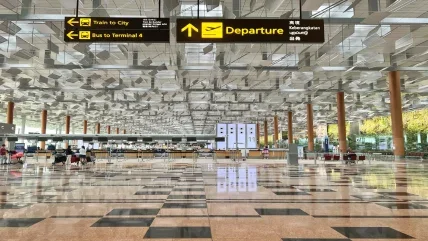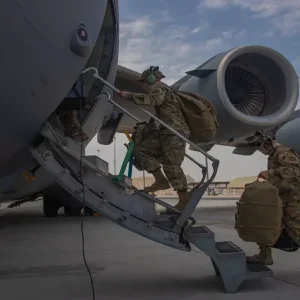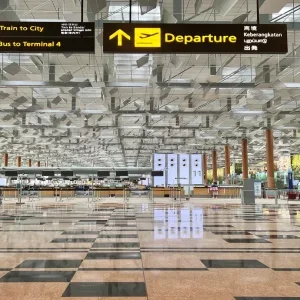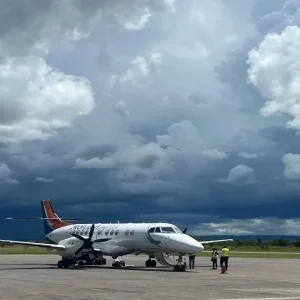
The airport sector, a critical component of global transportation infrastructure, is no stranger to economic fluctuations. Among the myriad economic challenges, inflation stands out as a significant factor influencing operations, development, and profitability. This article delves into the multifaceted impacts of inflation on the airport sector, exploring how airports can navigate these turbulent times while identifying potential opportunities for resilience and growth.
Understanding Inflation in the Context of the Airport Sector
Inflation refers to the general increase in prices and the subsequent decrease in purchasing power. For the airport sector, this phenomenon affects various aspects, from construction costs and operational expenses to passenger demand and revenue streams.
The Rising Cost of Construction and Development
Capital Expenditure and Infrastructure Projects
Airports worldwide are engaged in continual development to expand capacity, enhance services, and maintain safety standards. However, inflation drives up the costs of raw materials, labour, and equipment, making capital expenditure (CAPEX) projects significantly more expensive. For example, the price of construction materials such as steel, concrete, and glass has surged due to supply chain disruptions and increased demand.
Case in Point: Heathrow Airport Expansion
Heathrow Airport’s third runway project, a multibillion-pound endeavour, exemplifies how inflation can impact large-scale infrastructure projects. Rising costs have necessitated budget reassessments and may delay completion dates, further complicating the financial landscape for such ambitious projects.
Maintenance and Upgradation Costs
Inflation also affects the routine maintenance and upgradation of airport facilities. Airports must ensure that runways, terminals, and other infrastructure are well-maintained to guarantee safety and efficiency. Increased costs for materials and services mean that routine maintenance budgets must be adjusted, often leading to higher operational expenses.
Operational Expenses and Resource Management
Labour Costs
Airports are labour-intensive operations requiring a diverse workforce, from security personnel and ground staff to air traffic controllers and administrative employees. Inflationary pressures often lead to demands for higher wages, both to keep pace with the cost of living and to retain skilled workers. Consequently, airports may face increased payroll expenses, impacting their overall cost structure.
Energy and Utilities
Airports are significant consumers of energy, with substantial requirements for lighting, heating, cooling, and powering various systems and equipment. Inflation affects energy prices, particularly fossil fuels and electricity, leading to higher utility bills. This increase directly influences operational costs, prompting airports to seek more efficient energy management practices or invest in renewable energy sources to mitigate long-term impacts.
Passenger Demand and Revenue Streams
Airfare Prices and Passenger Traffic
As inflation drives up operational costs for airlines, these increases are often passed on to consumers through higher airfares. Elevated ticket prices can reduce passenger demand, particularly among price-sensitive travellers. This decline in passenger traffic affects airport revenues derived from landing fees, passenger service charges, and retail sales within the terminals.
Statistical Insight: Post-Pandemic Recovery
The International Air Transport Association (IATA) has noted that while global passenger numbers are recovering post-pandemic, the pace is uneven across regions. Inflation-induced price hikes could slow recovery in certain markets, making it crucial for airports to strategise on attracting and retaining passengers.
Ancillary Revenue Streams
Beyond aeronautical revenues, airports generate significant income from non-aeronautical sources such as retail, dining, parking, and advertising. Inflation impacts consumer spending behaviour, potentially reducing expenditure in these areas. For instance, higher costs of goods and services within airport retail outlets may deter passengers from making purchases, thus affecting the overall revenue mix.
Strategic Responses to Inflationary Pressures
Cost Management and Efficiency Initiatives
Airports can adopt several strategies to manage costs effectively in an inflationary environment. Implementing energy-efficient technologies, optimising labour deployment, and leveraging data analytics for predictive maintenance can help control expenses. Additionally, renegotiating contracts with suppliers and service providers may yield better terms and cost savings.
Diversification of Revenue Streams
To counterbalance the potential decline in passenger-related revenues, airports can explore new revenue streams. Investing in real estate development around airport premises, offering logistics and cargo services, and creating business and leisure amenities can provide alternative income sources. This diversification not only mitigates risk but also enhances the airport’s value proposition.
Enhancing Passenger Experience
Improving the passenger experience can encourage travel despite higher costs. Airports can invest in technology to streamline check-in and security processes, offer enhanced amenities and services, and create a seamless travel experience. By focusing on customer satisfaction, airports can build loyalty and drive repeat business.
Inflation and Technological Innovation
Automation and Digital Transformation
Automation and digital transformation present significant opportunities for airports to reduce operational costs and enhance efficiency. Self-service kiosks, biometric check-ins, and automated baggage handling systems can lower labour costs and improve processing times. These technologies not only combat inflationary pressures but also enhance the overall passenger experience.
Case Study: Changi Airport’s Digital Initiatives
Singapore’s Changi Airport is a leading example of leveraging technology to combat inflationary pressures. The airport has implemented a range of digital solutions, from automated immigration gates to AI-driven predictive maintenance systems, which have significantly improved operational efficiency and reduced costs.
Sustainable Practices
Sustainability initiatives can also play a crucial role in managing inflationary impacts. Investing in renewable energy sources, adopting green building practices, and implementing waste reduction programmes can lead to long-term cost savings. Additionally, these practices align with the growing consumer demand for environmentally responsible operations.
Long-term Implications and Future Outlook
Investment in Resilience
The airport sector must prioritise investments that enhance resilience against economic fluctuations. Building flexible infrastructure, adopting scalable technologies, and maintaining financial prudence are essential strategies. Airports should also focus on robust risk management frameworks to anticipate and mitigate potential economic challenges.
Policy and Regulatory Considerations
Governments and regulatory bodies play a significant role in shaping the economic environment for airports. Policies related to infrastructure funding, tax incentives, and environmental regulations can influence how airports navigate inflationary pressures. Engaging with policymakers to advocate for supportive measures is crucial for the sector’s sustainability.
Global Perspective: Comparative Analysis
A comparative analysis of different regions reveals varied approaches to managing inflation in the airport sector. For instance, European airports often benefit from substantial government support for infrastructure projects, while airports in developing economies may face more significant challenges due to limited financial resources.
Conclusion: Navigating the Path Ahead
Inflation presents both challenges and opportunities for the airport sector. While it drives up costs and can dampen passenger demand, it also spurs innovation and efficiency improvements. By adopting strategic responses, diversifying revenue streams, and leveraging technological advancements, airports can navigate these turbulent times effectively.
As the global economy continues to evolve, the airport sector must remain adaptable and forward-thinking. Building resilience, enhancing passenger experience, and embracing sustainable practices will be key to thriving in an inflationary environment. Through proactive management and strategic planning, airports can turn inflationary challenges into opportunities for growth and development, ensuring they remain vital hubs of connectivity and commerce in the years to come.






